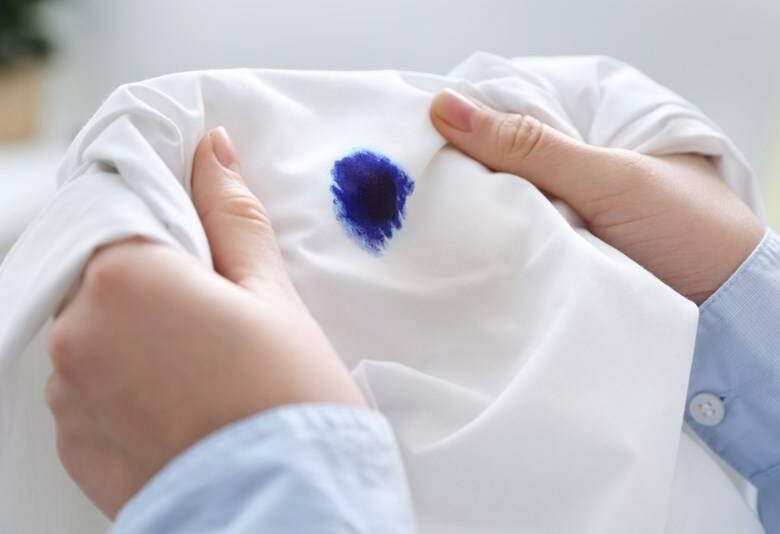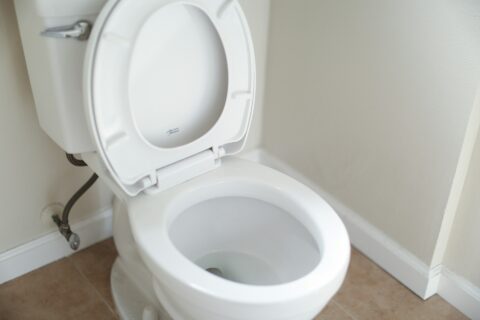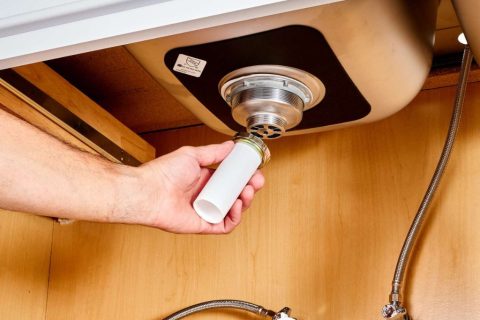
Oops! Did you get a ballpoint ink stain on your favorite shirt? It happens more often than you’d think. One minute, you’re taking notes or signing something; the next, ink is on your clothes.
There are easy ways to get rid of it right at home. With the proper steps and a little patience, you can save your clothes from those tricky stains.
This guide will provide simple, practical methods for cleaning up the mess and keeping your clothes looking their best.
Jump to Section [Hide]
- Preparing the Garment for Treatment
- Steps to Remove Ballpoint Ink from Clothes
- Using Commercial Stain Removers
- Special Tips for Dried or Set-In Ink Stains
- Caring for Delicate Fabrics
- Washing the Garment After Stain Removal
- Common Mistakes to Avoid
- Additional DIY Tricks to Try
- How to Prevent Future Ink Stains
Preparing the Garment for Treatment
Get the clothing ready before you treat the stain. Set up a clean, well-lit area to work without distractions.
Testing Fabric for Colorfastness
First, test the fabric in a hidden area. Wet a cotton swab with your cleaning product, like rubbing alcohol or nail polish remover. Dab it gently on the inside seam or under a hem. Watch for any bleeding or fading of color.
If no changes occur, you’re good to go! If the color bleeds, switch to gentler options like dish soap and water. Always take extra care with fabrics labeled “dry clean only” to avoid damage.
Setting Up Your Work Area
Lay a clean, dry towel under the fabric. This will soak up ink as you work. Keep another clean section of the towel ready for blotting. To avoid clutter, organize your tools, such as rubbing alcohol, dish detergent, or commercial stain removers.
Pretest cleaning solutions on a hidden fabric spot first. Use only what you need to focus better while cleaning. A well-prepared space makes stain removal easier and faster.
5 Steps to Remove Ballpoint Ink from Clothes
Act quickly. The sooner you tackle the ink stain, the better. Fresh stains are easier to remove than dried ones.
Step 1: Blot the Stain
Start by gently blotting the ink stain with a clean cloth or paper towel to absorb as much ink as possible. Avoid rubbing, as this can spread the stain further.
Step 2: Apply Rubbing Alcohol
Dampen a cotton ball or cloth with rubbing alcohol. Gently dab it onto the ink stain, working from the outside towards the center to prevent smudging.
Step 3: Use Liquid Dish Soap
After treating the stain with rubbing alcohol, apply a small amount of liquid dish soap directly onto the stained area. Gently rub it in with your fingers or a soft cloth.
Step 4: Rinse with Cold Water
Rinse the fabric with cold water to remove the soap and any remaining ink. Be sure to do this from the back of the stain to push the ink out rather than deeper into the fabric.
Step 5: Air Dry
Let the fabric air dry completely. Avoid using heat; it can set the stain if it hasn’t been removed. Check for any lingering ink stains; repeat the steps above if necessary.
Using Commercial Stain Removers
Try products like OrangeWonder, GooGone, or OxiClean to remove tough ink stains. These work well on marks on ballpoint and fountain pens. Apply the cleaner directly to the stain. Check the label for exact steps.
Use a prewash stain treater before putting clothes in your washer. Resolve and Simple Green are excellent choices, too. Avoid hot water washing unless you confirm the ink is gone or might be set deeper!
Special Tips for Dried or Set-In Ink Stains
Tackling dried ink stains can be challenging. Use a strong commercial stain remover like Persil or a dry cleaning solvent. Apply it directly to the spot and let it sit for at least 10 minutes before gently blotting it with a clean cloth.
Avoid scrubbing, as this could spread the stain.
For stubborn marks, professional cleaning is often your best option. Dry cleaners have special tools and products for set-in ink stains. If treating at home, rubbing alcohol or nail polish remover may help, but test on a hidden area first to check for damage.
Repeat steps if needed, but act fast to prevent further setting in the dryer!
Caring for Delicate Fabrics
Delicate fabrics like silk or lace need extra care. Test your cleaning solution on a hidden area first. This helps avoid damage or fading. Act fast to keep the ink stain from setting into the fibers.
Use gentle cleaners like rubbing alcohol sparingly, as it might not suit all fabrics. Dab, don’t rub, to prevent spreading the ink. Mix dish soap with water for safe cleaning on the most delicate items for homemade options.
Always handle these fabrics gently and rinse thoroughly after treating them.
Washing the Garment After Stain Removal
Wash the garment in the hottest water to ensure it is safe for its fabric. Check the care label to avoid damage. Use a strong detergent like Tide to clean thoroughly. Hot water helps remove ink traces, but stick with cold if working on delicate fabrics.
Make sure all stains are gone before drying. Heat from dryers can lock remaining marks into place, making them hard to remove later. Skip chlorine bleach. It might damage colored clothes or weaken fibers over time.
Common Mistakes to Avoid
Scrubbing the stain is a bad idea. It spreads the ink and pushes it deeper into the fabric. Instead, blot gently with a clean cloth or paper towel. Always start from the outside edge of the stain and work inward to keep it contained.
Drying clothes with a stain still on them locks them in place. Avoid this at all costs. Use cold water instead of warm, as heat makes removing stains harder. Test any cleaning product on an unseen part of the fabric first to avoid ruining colors by mistake!
Additional DIY Tricks to Try
Try some unusual household items for ink stains, they might surprise you! A few simple steps can make those tough spots vanish.
Lemon Juice and Salt
Mix lemon juice and salt to make a thick paste. First, test it on a hidden part of the garment to check for color changes.
Spread the paste over the ink stain and let it dry completely. Once dry, wash the garment in cold water. This simple method works well for ballpoint ink stains, especially on sturdy fabrics.
Cornstarch Paste
Cornstarch works well on wet carpet stains caused by ink. Mix cornstarch with a bit of water to make a thick paste. Spread it over the stained area.
Let the paste sit until dry, then brush or vacuum it off. This method absorbs liquid ink and can prevent deeper staining. For stubborn spots, repeat as needed.
Hand Sanitizer
Hand sanitizer works well on ink stains. Its alcohol content breaks down the ink, making it easier to remove. Dab some onto the stain and let it sit for a few minutes. Then gently blot with a clean cloth, don’t rub! This works on clothes and carpets, too.
Use clear hand sanitizer without dyes or scents. Colored gel can make things worse by leaving new marks behind. If you are unsure about colorfastness, test on a hidden fabric spot. Hand sanitizer with writing instruments like rollerball pens or felt tips is also handy for quick fixes when accidents happen at work or school.
How to Prevent Future Ink Stains
Cap your pens tightly to avoid leaks. Store them upright or, in some cases, to reduce spills. Avoid using pens that often leak, like some felt-tip pens.
Check your clothes before washing them for hidden ink stains. Test cleaning agents, such as rubbing alcohol, on a small area first to protect colors and fabrics. Clean writing tools regularly for less buildup and fewer accidents!
In Summary
Removing ballpoint ink stains doesn’t have to be stressful. With the right tools and quick action, you can save your clothes. Use items like rubbing alcohol or dish soap for effective results.
Always test cleaners on a hidden spot first. Take care, and those pesky stains will be gone in no time!
Additional reading:








